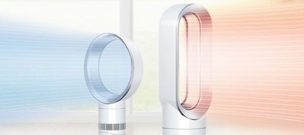While air pollution is an issue all year round, different seasons see an increase in certain pollutants due to various factors such as temperature, climate, and human activities.
Spring
Sees invisible pollen particles, from trees and grass, can travel for miles sticking to clothing and hair and triggering allergies. In certain regions, fine sand or dry soil particles are blown up through the sky by spring winds and spread through the atmosphere before falling to the ground.
Summer
Summer is prime time for renovation, but as a result, the colourless gas, formaldehyde, can be released from some forms of furniture, insulating materials, paints, and varnishes. Applying personal care products, such as insect spray, can cause VOC levels to spike, while BBQ can give rise to Nitrogen Dioxide (NO2) and particulate matter like PM2.5. In addition, some air conditioners remove humidity from the air as a natural by-product of cooling, which can impacting comfort within the home.
Autumn
Brings colder weather and shorter days prompt us to spend more of our time indoors. Modern homes are well-sealed so indoor pollutants from activities like cooking and cleaning can build up indoors.
Autumn also gives rise to the ragweed plant, which can produce up to 1 billion pollen grains, attaching easily to things like hair, shoes and clothing and potentially triggering seasonal allergies.
Winter
Winter sees cold air getting trapped beneath warm air in colder months, in a process called temperature inversion. The warm air above the cooler air acts like a lid, suppressing vertical air mixing which means that emitted pollutants can get trapped near the ground, encouraging poor air quality. Lighting fires and candles indoors, festive cooking and opting to take your car rather than walk due to the colder weather may also heighten exposure levels as these are all sources of pollution. Central heating and cold air can lower the amount of moisture in the air, reducing humidity levels and impacting comfort and wellbeing indoors.
You might now be asking "What can I do to improve my personal air quality exposure?"
Fortunately, there are a number of ways to help improve your personal air quality exposure. Reducing pollution sources, such as aerosol sprays and candles within your home is a good start, as well as adapting your routines to include fewer polluting activities. This could be by taking fewer busy roads on your daily commute or finding alternatives to more polluting cooking methods like frying. Using a Purifier, Purifier Heater or Purifier Humidifier is another method to control and understand your indoor air quality.
To read about the types of common household pollutants and how our Purifiers sense, report and purifier the home, click on our What are the common household pollutants? article.



